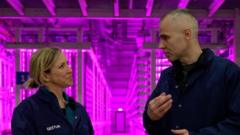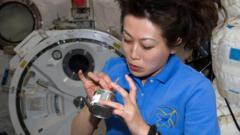In the heart of Iceland, beneath the shadows of its largest geothermal power station, lies Vaxa Technologies—a pioneering indoor farm dedicated to growing microalgae in a high-tech environment illuminated by a surreal pink-purple light. General Manager Kristinn Haflidason leads visitors through this futuristic facility, which represents a progressive approach to food production. While seaweed has long been consumed globally, the lesser-known microalgae is gaining attention for its nutritional benefits and sustainability.
Situated approximately 35 minutes from Reykjavik, Vaxa specializes in cultivating the microalgae Nannochloropsis for human consumption, as well as feeding fish and shrimp in aquaculture. The farm also cultivates Arthospira, commonly known as spirulina, which is recognized for its health benefits and often found in dietary supplements and food products.
Vaxa operates in a unique partnership with the geothermal power plant, utilizing its clean electricity and efficient heating and cooling systems. This collaborative effort results in a remarkable carbon-negative footprint while promoting low land and water usage, as indicated by a recent study co-authored by food technology consultant Asger Munch Smidt-Jensen.
Central to the operation are modular units called photo-bioreactors, where microalgae flourish under carefully managed conditions. These units employ red and blue LED lights, optimized for photosynthesis, and are supplemented by machine learning technology for precise growth management. Approximately 7% of the algae is harvested daily, supporting a potential annual output of up to 150 metric tonnes.
Despite the promising prospects, microalgae still face challenges before becoming a staple in our diets. Nutritional viability and palatability are ongoing concerns, with texture issues and distinct flavors affecting acceptance. Experts like Malene Lihme Olsen advocate for further exploration of the nutritional properties and suggest incorporating microalgae into other food products to enhance taste and texture.
Currently, innovative applications for microalgae extend beyond human consumption, including cosmetics and biofuels, and even potential cultivation in extraterrestrial settings. While the journey toward mainstream adoption continues, Vaxa's forward-thinking approach demonstrates the significant potential for microalgae in addressing global food insecurity and reshaping the future of sustainable agriculture.






















